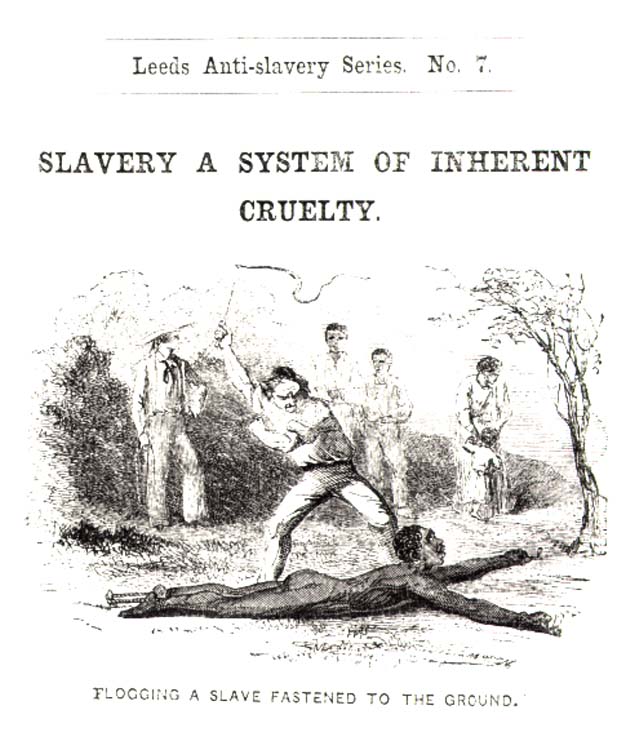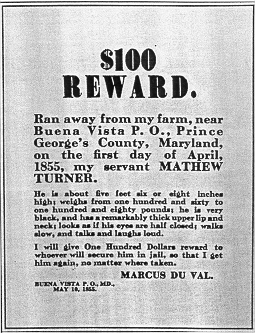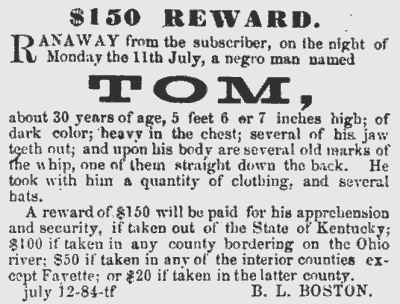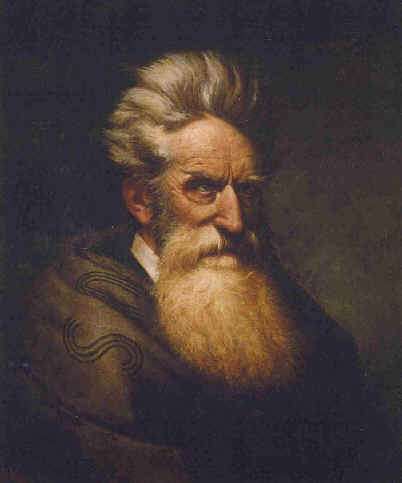Web Lecture #3

Lesson Overview
This
online lecture will discuss the pre-Civil War era in the United States and
the Abolitionist efforts to annul the institution of slavery. The play that
we will be reading this week, The Escape by Williams Well Brown was
written as a protest against slavery. It was read aloud at abolitionist meetings,
but was not given a full stage production until the twentieth century.
Key Concepts
-
-
Pro-Slavery
and Abolitionist Movements
-
-
-
William
Wells Brown and The Escape
|
|

Slavery
between 1820 and 1863
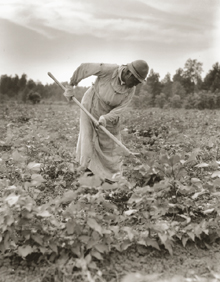 Much
of the wealth of the American South in the1820Õs and 1830Õs depended upon
the buying and selling of cotton. Field workers harvested and seeded the cotton
so that it could be woven into high priced cotton thread. This involved collecting
large amounts of cotton bolls for processing. The cotton gin, which was invented
in 1793 made it easy to process large amounts of cotton quickly. Consequently,
the cotton industry needed low labor costs to insure high profits. Enslaved
blacks, imported from Africa helped to fulfill this demand.
Much
of the wealth of the American South in the1820Õs and 1830Õs depended upon
the buying and selling of cotton. Field workers harvested and seeded the cotton
so that it could be woven into high priced cotton thread. This involved collecting
large amounts of cotton bolls for processing. The cotton gin, which was invented
in 1793 made it easy to process large amounts of cotton quickly. Consequently,
the cotton industry needed low labor costs to insure high profits. Enslaved
blacks, imported from Africa helped to fulfill this demand.
Before
the nineteenth century many slaves worked on small farms harvesting tobacco
or labored in households attending to landownerÕs personal needs. Many of
these slaves were located in the Eastern seaboard states. Occasionally a slave
was able to gain freedom through outside work or through the "good will" of
a slave owner. This growing population of free blacks became a threat to landowners
who needed slaves and feared that they might rebel. By 1820 the institution
of slavery had spread to the new "cotton kingdom" which included the more
western states of Mississippi, Alabama, and Louisiana. Many slaves were relocated,
bought and sold, to support large plantations that were developing in these
states.
At
the same time, some United States citizens were beginning to question the
institution of slavery. The advocated for and supported the growing population
of free blacks.

Slave
Codes
In
order to regulate the movements of enslaved blacks, individual states began
to pass "black codes" or "slave codes" that limited the travel of both enslaved
and free African Americans. In 1793, for example, the state of Virginia passed
its first law that prevented free blacks from entering the state. By 1806,
the Virginia law was amended to state that any free blacks found in the state
could be seized and sold as a slave. The slave codes were enacted at different
times in the various Southern states. Collectively, they included provisions
that eventually:
-
Regulated
the food that African Americans could eat that the housing that
they could occupy.
-
Banned
the consumption of alcohol.
-
Prohibited
the education of African Americans.
-
Made
slave marriages illegal.
-
Required
all African Americans to carry passes.
-
Encouraged
slave owners to hire slave catchers.
-
Encouraged
the use of mutilations and brandings to identify slaves.
|
|
Here
are some examples of "slave codes."
"any
free person found in company with any slave in any kitchen, or house, or
Negro quarter, without a written permission from the owner or overseer of
such slave must, for every such offence, receive fifteen lashes; which may
be inflicted by the owner, or overseer of the slave, or by any officer or
member of a patrol company." (Alabama sec. 1035)
"where
the punishment of a white person might be imprisonment, the court may sentence
the free Negro to be both whipped and imprisoned." (North Carolina, c.107)

Intersectional
strife
As
the United States acquired new territories, controversy arose about whether
each new state should be a slave state or a free state. In some ways the dissension
reflected the growing tension between the industrialized northern territories
and the more agricultural southern states.
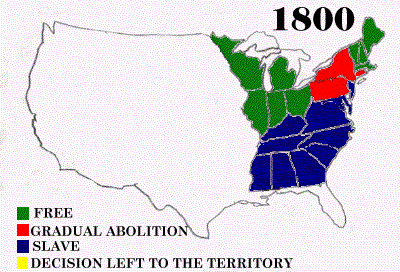
Each
side of the debate the abolitionists and the pro-slavery advocates developed
arguments to support their beliefs. Some of these arguments are summarized
below. Read the arguments carefully and look at the web links that accompany
them. In class we will have a debate about slavery in which you will be asked
to argue for one side or the other
Abolitionist
arguments:
The
abolitionists were partly
spurred by the philosophy of humanitarianism that was popular during the early
nineteenth century. The humanitarians were influenced by Enlightenment ideals
of democracy, equality, and the rights of the under class. The fought for
the social progress and human rights of children under privileged workers,
and women. Many of these ideas originated in the European bourgeoisie or middle
class circles. Think about the story of Oliver Twist. (LINK) This novel, written
by Charles Dickens, describes the miserable life of street child and asks
its readers to empathize with the plight of the underclass. Similar sentiments
stimulated the abolitionist ideals. Abolitionists believed that:
-
Slavery
was antiÑChristian/All men are created equal.
-
Slavery was contrary to the American way of life/Freedom.
-
Slavery
was economically unsound, that is was a waste of physical labor, lives,
and goodwill.
-
Slavery was politically dangerous and a menace to the countryÕs safety because
of the likelihood that slaves would rebel and initiate a race war.
Pro-Slavery
arguments
Many pro-slavery
advocated argued from a perspective of logical positivism and scientific advancement.
They believed that:
- Slavery
was a positive good. It was a necessary step along the road towards civilization.
- Slave
labor was essential to economic prosperity. In all societies a menial class
is a necessity and slaves fulfilled this need.
- Blacks
are biologically unequal and genetically inferior. They used medical classification
data that was popular during this time.
- Slavery
converts heathens to Christianity and improves them.
- Free
blacks would be a threat to unskilled white laborers.
Abolitionists actions
The Abolitionists
used several strategies to popularize their cause.
-
Newspapers
and writings
Both
Black and White abolitionists began to publish and distribute treatises
about the brutality of slavery and the humanity of African Americans. One
of the first to appear was David WalkerÕs Appeal to the Colored People of
the World published in 1829. This pamphlet was distributed by a free black
man was so inflammatory and passionate in itÕs appeal for justice that the
Governor of Georgia quarantined a ship carrying a boatload of the documents.
It advocated for the use of violence to overthrow the system of slavery.
Abolitionists also began to publish newspapers like "The Liberator (1831),"
"The North Star," and the "FreedomÕs Journal (1827)." William Lloyd Garrison
who later founded the New England Anti-Slavery Society published the Liberator
in Boston. Northern businessmen and philanthropists funded his organization.
They also fought for womenÕs suffrage.
-
Armed
insurrections
Some
abolitionists supported the use of violence and advocated for armed overthrow
of slaveholders. In some counties the African American population matched
or exceeded the white population. In such cases, insurrection seemed possible
if not likely. Two of the most well known insurrections were led by Nat
Turner in Virginia (1831), and John Brown
at HarperÕs Ferry Virgina (1859).
-
Lobbying
As
each state entered the Union, Senators and politicians would for new states
like Kansas, Texas, California, and Nebraska to be anti-slavery. Controversy
surrounding the state of Kansas was particularly strong. The Missouri Compromise
of 1850 at first prohibited slavery, but the Kansas-Nebraska
Act of 1854 reinstated it. Bloody skirmished broke out as "Free Staters"
fought against the pro-slavery lobby. Eventually Abraham Lincoln condemned
the Kansas-Nebraska Act.
-
The
Underground Railroad
The
Underground Railroad was a network of people who assisted enslaved Blacks
in the Southern states who wanted to flee to the free states in the north
or to Canada. Blacks would stay in the homes of Underground Railroad supporters
who would assist them in their escape efforts. Harriet
Tubman became the most well know leader of escaped slave convoys. After
the Fugitive Slave Act was passed in 1850, blacks that escaped to the Northern
states were no longer free. The Act allowed slave owners to reclaim their
captured slave property from wherever they resided.
Some
United States citizens believed that the "slavery problem" could best be solved
by returning all blacks to Africa. In 1816 an African American named Paul
Cuffe founded the American Colonization Society, an organization that
sponsored the resettlement of between 12,000 and 20,000 blacks in Liberia.
Although some abolitionist and pro-slavery supporters, both black and white,
supported the back-to Africa-movement it gradually lost popularity for three
reasons. The first is that it was too expensive and difficult to return thousands
of free blacks, the second was that the absence of the blacks would have created
a huge labor shortage, and the third was that African Americans believed that
they were valuable citizens who had contributed to the growth and development
of the United States.
Literature
was used by abolitionists as a way of illustrating the brutalities of slavery
and as a way of depicting the humanity of African American people. Two types
of literature gained popularity, Slave Narratives and novels about
Black plantation life. The most popular abolitionist novel was Uncle TomÕs
Cabin (1852) written by Harriet Beecher Stowe.
Slave
narratives were authored or co-authored by African Americans; often free blacks
that had escaped from southern plantations. Through their descriptions of
whippings, rapes, and the separation of families, they counteracted prevailing
beliefs about the "happy" life on the plantations. Frederick Douglass and
William Wells Brown (the author of the play The Escape that we will be reading
for class) wrote some of the most well known narratives.
Uncle
TomÕs Cabin became the most sensational and best selling novel of the nineteenth
century. It was written by the daughter of a white minister and its portrayals
of pious Black characters appealed to Northern Christian audiences. Ownership
of the book was mad illegal in several Southern states. Many of the characters
were later seen as stereotypical for example, Uncle Tom, the subservient protagonist,
Topsy, the dark-skinned roustabout girl, Emmeline, the "beautiful" Octaroon,
and the house servants who were Mammy figures. Nevertheless, the novel called
attention to the plight of African American enslaved people.
Our reading
for this week is The Escape (1858) written by William Wells Brown
(1813-1884). This play was actually an abolitionist treatise that was read
(rather than performed) at anti-slavery gatherings. The characters were developed
to show the diversity of African American types. Cato represents the stereotypical
"Sambo" slave who follows his masterÕs orders, while the characters of Glen
and Melinda who eventually escape to freedom use crafted language to express
anti-slavery sentiments.
William
Wells Brown (1813-1884)
-
He
was forced to change his name to Sanford when the plantation owners adopted
a white nephew. He was viciously beaten when he insisted upon calling himself
William.
-
As
an adult, both blacks and whites disliked him because of his light colored
skin.
-
His
first book was a slave narrative.
-
As
a youth, he worked in a tavern, on a steamboat, as a tailor. One of his
jobs was to transport slaves to auction. He was forced to pick gray hairs
out of the heads of older slaves so that they would look younger.
-
He
fled with his mother to Canada, but she was recaptured and returned to slavery.
-
While
working on a steamboat he carried a trunk on shore and escaped. He was almost
starved when he was found by a Quaker named Wells Brown who sheltered and
nursed him. Wells Brown gave the author his name.
-
Brown
later married, moved to Buffalo, and assisted with the Underground Railroad.
-
He
wrote a novel called Clotell or The PresidentÕs Daughter about a mulatto
slave girl that belonged to Thomas Jefferson.
-
He
also wrote a collection of songs for anti-slavery meetings.
-
When
the 1850 Fugitive Slave law was strengthened, Brown went to Paris as a delegate
to the International Peace Congress and stayed for three years. There he
wrote a novel called Three Years in Europe that was later renamed The American
Fugitive in Europe.
-
Brown
fought in the Civil War and wrote The Black Man, His Antecedents, and His
Genius and later, after the Civil War The Negro in the American Rebellion,
His Heroism and His Fidelity.
-
He
was buried in an unmarked grave in Massachusetts.

Discussion Questions
1) Which
elements of the play make it a strong statement for the abolitionist cause?
2) How
does the play reflect BrownÕs concerns about his own mulatto identity?
3) How
is language used to differentiate the characters?
4) Why
does Brown include the stereotypical character of Cato in his play?
5) How
does the play argue against the brutality of slavery, the hypocrisy of religion,
and the idea of miscegenation?
6) How
are the female characters portrayed in the play?
Copyrighted
2001, United
States of America
Anita Gonzalez & Ian Granick


 Much
of the wealth of the American South in the1820Õs and 1830Õs depended upon
the buying and selling of cotton. Field workers harvested and seeded the cotton
so that it could be woven into high priced cotton thread. This involved collecting
large amounts of cotton bolls for processing. The cotton gin, which was invented
in 1793 made it easy to process large amounts of cotton quickly. Consequently,
the cotton industry needed low labor costs to insure high profits. Enslaved
blacks, imported from Africa helped to fulfill this demand.
Much
of the wealth of the American South in the1820Õs and 1830Õs depended upon
the buying and selling of cotton. Field workers harvested and seeded the cotton
so that it could be woven into high priced cotton thread. This involved collecting
large amounts of cotton bolls for processing. The cotton gin, which was invented
in 1793 made it easy to process large amounts of cotton quickly. Consequently,
the cotton industry needed low labor costs to insure high profits. Enslaved
blacks, imported from Africa helped to fulfill this demand. 